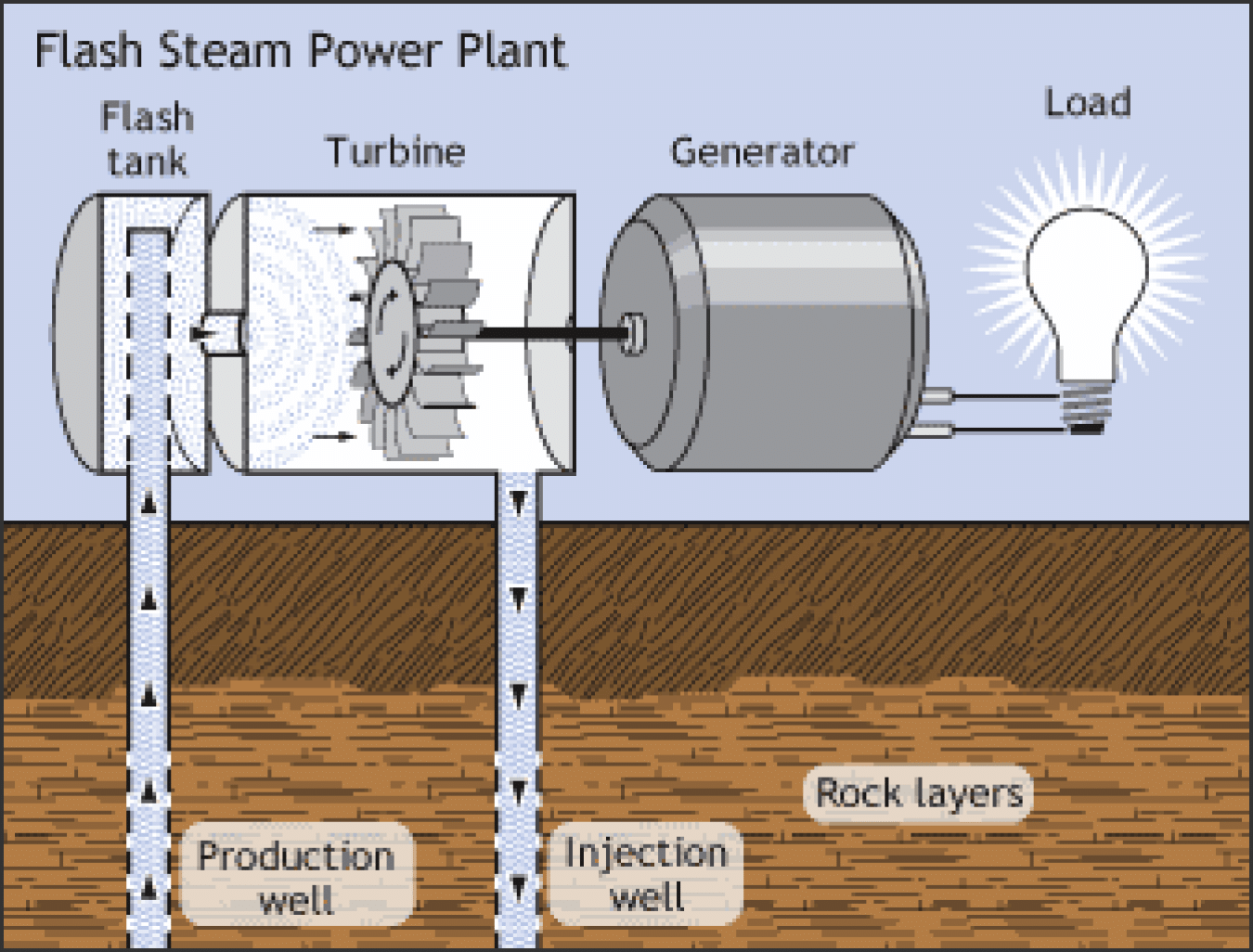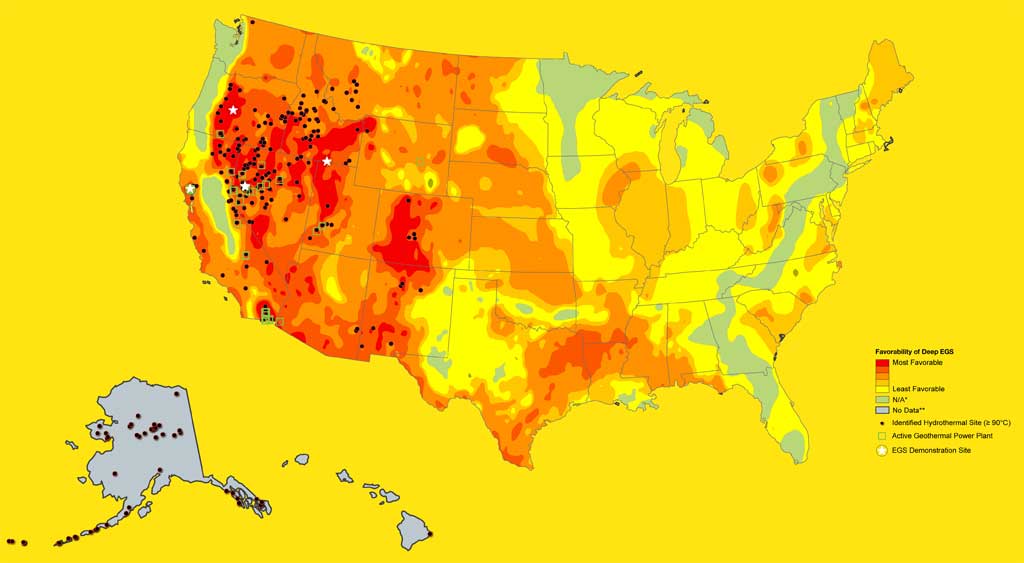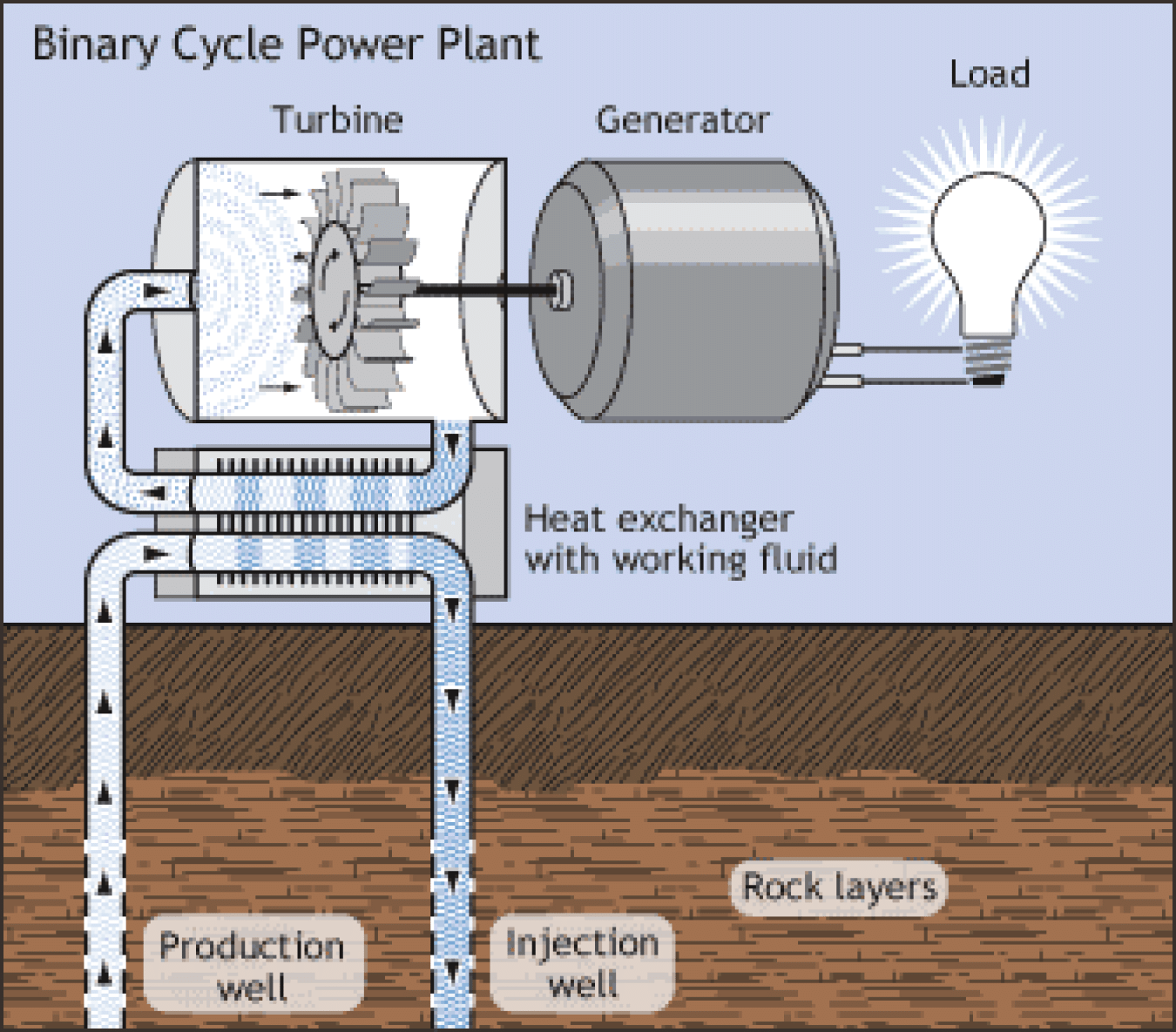Humans need stable energy supplies that do not harm the Earth. An underutilized source lies beneath our feet.
Geothermal is clean, limitless, predictable, and almost carbon free. But geothermal has no multi-trillion-dollar industry promoting it, nor support from Canadian politicians conditioned to follow established paths. Mostly that means subsidizing fossil fuels.
Heat, through convection and decay of radioactive materials, is transferred toward Earth’s outer crust and comes to the surface in some easily accessible places.



The Union of Concerned Scientists explains the potential:
The amount of heat within 10,000 meters (about 33,000 feet) of Earth’s surface contains 50,000 times more energy than all the oil and natural gas resources in the world.
The areas with the highest underground temperatures are in regions with active or geologically young volcanoes. These “hot spots” occur at tectonic plate boundaries or at places where the crust is thin enough to let the heat through. The Pacific Rim, often called the Ring of Fire for its many volcanoes, has many hot spots…
These regions are also seismically active. Earthquakes and magma movement break up the rock covering, allowing water to circulate. As the water rises to the surface, natural hot springs and geysers occur…
Seismically active hotspots are not the only places where geothermal energy can be found. There is a steady supply of milder heat—useful for direct heating purposes—at depths of anywhere from 10 to a few hundred feet below the surface virtually in any location on Earth. Even the ground below your own backyard or local school has enough heat to control the climate in your home or other buildings in the community.
MIT’s climate portal says there is “enough heat flowing from inside the earth to meet total global energy demand twice over” but harnessing it is difficult and expensive. However, the benefits are enticing:
“It’s really the only baseload renewable,” says Jody Robins, a geothermal engineer at the National Renewable Energy Laboratory. Nuclear power (which is carbon-free but not renewable) can serve a similar role, although cost, issues with waste, and public perception have limited its deployment.
Nuclear is a mostly reliable, carbon free energy source. But after more than 75 years of creating waste that will remain radioactive for thousands of years, humans have no risk-free ways to transport and deal permanently with growing piles of spent fuels.
Geothermal offers the prospect of safe, inexhaustible energy. Yet geothermal energy is untapped in most regions of the world, even those that have the greatest potential.
Beyond political and corporate inertia, there are reasons geothermal is a poor stepchild of the energy industry. It is least complicated in particular regions. Iceland for example, because it sits on the Eurasian and North American tectonic plates and has many near-surface hot spots. But Canada has identified areas ripe for development of energy from the earth, mostly in western Canada.
In places where water in injected to improve permeability of the ground — à la oil and gas fracking — a potential concern is induced seismicity. Additionally, heavy demands may be placed on fresh water supplies and pollution may result. To sustain reservoir pressure and steam production, California’s Geysers geothermal project injects tertiary treated effluent from drainage systems in nearby urban areas.


As the cost of wind and solar power has steadily declined and as energy storage systems evolve, investors have been less willing to fund geothermal. In a November 2021 update, the International Energy Agency (IEA) stated:
Electricity generation from geothermal sources increased an estimated 2% year-on-year in 2020, falling below average growth of the previous five years. Geothermal capacity additions averaged 500 MW per year in the last five years, with Turkey, Indonesia and Kenya responsible for most of this growth. These countries are expected to continue to lead, as they have abundant and untapped resource availability.
Nevertheless, geothermal technology is still not on track to reach the required Net Zero 13% generation increases per year over 2021-2030, corresponding to ~3.6 GW of average annual capacity additions. Policies to decrease costs and tackle challenges associated with predevelopment risks are needed to enlarge the deployment of geothermal resources for power generation.
A year ago, inimitable Dave Borlace of Just Have a Think examined the subject. His work is dependable and untainted by commercial interests.
Boise has the largest geothermal system in the country, Idaho Press, 2018
About a third of downtown Boise is heated by geothermal energy, including some of the largest buildings… For all of the 92 buildings and 6 million square feet on the system, it costs the city approximately $1,000 per month total to heat.
Can Geothermal Power Play a Key Role in the Energy Transition?, Yale School of the Environment, December 2020:
Aided by advances in deep-drilling technology for fracking, engineers are developing new methods of tapping into the earth’s limitless underground supplies of heat and steam.
…geothermal has not been viewed as a major feature on the alternative energy landscape.
But a number of experts around the world say that notion is wrong. Thanks especially to the deep-drilling techniques and knowledge about underground formations developed by the oil and gas industry during the fracking boom, a type of geothermal energy called deep geothermal can access hot temperatures in the earth’s mantle as far down as two to three miles...
An 18-member panel assembled by MIT evaluated geothermal systems and found enormous potential for recovery of clean energy. Parts of the world have easily developed hydrothermal resources but the Earth’s deeper, stored thermal energy is present everywhere.
Enhanced geothermal systems (EGS) use heat-mining technology that absorbs stored thermal energy from the Earth. Water is injected into a subsurface fracture zone where it absorbs heat before it is returned to the surface. Heat is extracted to drive turbines that create electricity, and the water is returned to the reservoir. The circulation loop is complete.
MIT noted that people undervalue the long-term potential of geothermal energy. The study stated:
…many attributes of geothermal energy, namely its widespread distribution, base-load dispatchability without storage, small footprint, and low emissions, are desirable for reaching a sustainable energy future.
Categories: Climate Change, Energy








Fascinating & essential reading – esp. for our plodding politicians, who sorely need ReaL acTion backing up their largely-empty promises to meet our climate goals, reduce emissions & quiT funding ecocidal industries/ projects that only add to our dilemmas..
(Course the latter is my heartfelt wish & not a govt promise, UNfortch..)
But THANK YOU for this expert insight into a renewable which I’ve been touting for years yet mostly met with condescending jeers & endless (non-experts’) reasons why it wouldn’T work – here in BC no less! This needs to be shared – widely++
LikeLike
As an aside to the Calpine promotional video, I was intrigued by the references to “good old American ingenuity” and looked up a bit of “The Geysers” history. Wikipedia tells us that:
“For about 12,000 years, Native American tribes built steambaths at the Geysers and used the steam and hot water for healing purposes and cooking.”
“When European Americans first entered the area, six Indian tribes inhabited the area around the Geysers…”
“Between 1848 and 1854, Archibald C. Godwin developed The Geysers into a spa named The Geysers Resort Hotel…”
Godwin later died in the civil war as a Confederate brigadier general. General Archibald Campbell, who administered U.S. Public Lands of Missouri and the Northwest Territory was his grandfather, so no surprise then that Godwin, “…owned 640 acres of nearby land and was engaged in mercantile and livestock business. Since approximately 150 Native Americans lived on the Russian River, the Federal government appointed the 6’6″ Godwin as an Indian agent, and Charles F. Winslow after visiting the area wrote that they were “under Mr. Godwin’s complete control.”
“Today, Calpine Corporation generates power at the site and no Native American groups receive direct financial benefits from the operation.”
Good old American ingenuity…
https://en.wikipedia.org/wiki/The_Geysers
https://en.wikipedia.org/wiki/Archibald_C._Godwin
LikeLiked by 3 people
Binary closed loop systems pose little risk to any formations and will produce enough energy to produce electricity at relatively low downhole temperatures. 100 degree C is adequate and there is huge potential in BC for this.
In the early 80s when the Site c dam was rejected the BCUC recommended that BChydro look at geothermal. A feeble effort produced some information from the Mt Meaghre area. A second look was taken after the Hydro board again rejected site c in the 90s. New technology could make this area productive, if not for the $16B and counting financial/geotechnical disaster going on at Site c.
Especially as lack of demand allows for time to develop the resource which is located about a thousand KM closer to BC’s load centre.
LikeLiked by 3 people
On line is not the place to really have a discussion on any topic because it’s not in a room, live. Having said that; the first question to pop into my critical thought, is that: “If the planet went geothermal, what would be the affect on the central core of the planet losing a massive amount of energy on a massive scale continuously?”
LikeLike
I don’t think that the people of the planet are going to go geothermal in the sense that that is all we would use. We have used solar and wind and geothermal for millennia and making improvements in the efficiency of all of those will reduce the need for any one to be used exclusively. Also reducing the need, for massive amounts of energy extraction from any source, is conservation efficiency, the less we need the less we have to pay for. One mitigating factor for your question is that geothermal loops can be used for cooling as well, taking the heat out of buildings and putting it back into the ground, though using insulation reduces the need for heating and cooling.
Some heat is lost from the earth all the time and the best locations for geothermal would be on the points where that heat loss is already greatest.
LikeLike
I have also wondered why geothermal is not getting more attention in the renewable energy arena. It’s potential to provide steady, predictable and clean baseload is unmatched. As far as cost goes, it can’t possibly be more expensive than Site C.
LikeLiked by 1 person
Politicians buried up to their necks in their self serving status qou along with greedy corporate entrenchment mentalitity are the problem. I think it’s going to be a rough path and battle ahead rather than an easy one against these people.
LikeLike